Wasps are key players in the ecosystem. Have you thanked a wasp today?
- Heather Raithby Doyle
- Mar 27, 2024
- 5 min read
Updated: Mar 28, 2024
Story and photos by Heather Raithby Doyle
Native plants attract all kinds of fascinating insects and that includes wasps.
Stare at a patch of Virginia mountain mint, and you may spot a large reddish brown wasp with an impossibly narrow waist called the elegant grass-carrying wasp (Isodonta elegans) visiting for nectar. If the wasp is female, she may be fueling up before hunting tree crickets for her nest. Stinging, then wrapping her long legs around a cricket to transport, she will eventually pack between three and eleven crickets into each egg cell before heading out again. Grass blades will close off the nest once she is finished.

Grass-carrying wasp on Virginia mountain mint (Isodontia spp.)
Wasps are nature’s pest control, making them extremely important from a biological point of view. Instead of spraying insecticide, some farmers in Manitoba and Quebec are now using a tiny parasitoid wasp as effective control over invasive cabbage seedpod weevils that decimate canola crops. Other wasps are used to target tomato hornworms, whiteflies in greenhouses, as well as help save grape and other fruits from pests. Perhaps you have seen oak gall on oak leaves? This is a home of a tiny cynipid wasp, which lays eggs on oak leaves. Enzymes create a reaction on the oak leaf, which then forms a round, safe home for the larvae, and helpfully falls to the ground so the larvae can pupate in the ground.
A world without wasps would soon be overrun with insects and spiders.
Yet, despite their service, wasps get a bad rap. Many people may have been stung by social wasps, which actively defend their nests. Who can blame them? But did you know these social yellow jackets and hornets make up only a tiny proportion of the 30,000 types of wasps in the world?
L: Common aerial yellowjacket; R: Bald-faced hornet nest (social)
Wasps can be as large as the northern giant hornet at two inches long, and as small as the parasitic wasp Dicopomorpha echmepterygis, also the world’s smallest known insect at .005 inches long, sometimes called fairy flies.
Most wasps are not social but solitary. They go about their business, which includes feeding on nectar or aphid honeydew, and finding a mate. As they feed they inadvertently pollinate, which provides an important service to the plant. Female wasps, in addition, build a home and find insects, caterpillars and spiders to provision their nests.
“Solitary wasps have little incentive or time to use their valuable venom to defend their nest,” says Heather Holm, author of Wasps: Ther Biology, Diversity, and Role as Beneficial Insects and Pollinators of Northern Plants. “They reserve their venom for subduing their prey so they can provide a paralyzed, fresh, and live food source for their larvae. Solitary wasp adults have a short life span and are many ways risk-averse because it is up to one female, without the cooperative help of any nest mates, to ensure the survival of her progeny,” continues Holm.
Wasps author has seen in her Blooming Boulevards garden last year. Top to bottom: European paper wasp; Common thread-waisted wasp; Mexican grass-carrying wasp; Syrphid Fly – Spilomyia longicornis hoverfly resembling vespid wasp.
For anyone interested in identifying wasps in Eastern North America, Holm’s book is THE book, filled with delightfully large photos and jam-packed with information about wasps and native plants. While extensive, Holm says that the study of wasps is still evolving and there is much we don’t know. For citizen scientists, this is your cue to visit iNaturalist or other apps to report your sightings.
Wasp nests turn out to be as variable as the species. Some ground-nesting wasps dig a hole in sandy ground, making sure to cover the entrance when they leave or flattening out a pile of sand that might give away the location of the nest. They have been seen to mark the spot with rocks or sticks to make it easier to find upon return.
Other wasps look for a rotting log or pithy stem to excavate a nest, and create partitions for their eggs. Potter and mason wasps, as their names suggest, gather soil and water in their crop (a carrying mechanism inside their body) to make a mud nest. Plant leaves, sand, and saliva might also be added to make waterproof enclosures for the eggs.
L: Four-toothed mason wasp; R: Great golden sand digger wasp
One branch of wasps, called the parasitoids, doesn’t bother making a nest at all. Instead, they lay their eggs on a hapless bee or fly, often in the air. When the larvae emerge, they consume the host. Other types of wasps, called kleptoparasites, wait for other wasps to build and provision a nest, before swooping in and laying eggs directly on the prey which leaves the original larvae, once they hatch, without food. The spectacular cuckoo wasps (Chrysis spp.), with their iridescent green exoskeleton that resembles a sweat bee, are kleptoparasites.
Besides loss of habitat and use of insecticide by humans, wasps face many other enemies including predatory flies and wedge-shaped beetles. Often, a type of wasp is reliant on a specific prey such as the Monochromatic stink bug-hunting wasp (Astata unicolor) which hunts, you guessed it, stink bugs, a specialization which can increase vulnerability.
Interestingly, wasps, bees and ants are ‘cousins’, belonging to the Hymenoptera order. It is thought bees, the vegetarians of the groups, are descendants of ancient wasp populations. Scientists have found evidence of wasps 240 million years ago during the mid-Triassic era, while humans have ‘only’ been around for six million years.
The difference between bees, wasps, and flies
Characteristic | Bees | Wasps | Flies |
Hairiness | Yes | No | Mostly no |
Antennae | Long | Long | Short |
Wings | 2 pairs | 2 pairs | 1 pair, plus halteres (not true wings) |
Waist | Defined head, thorax, abdomen sections with a sturdy look | Narrow, sometimes extremely thin | No waist |
Eyes | Compound, with three simple eyes on top of the head | Compound, with three simple eyes on top of the head | Simple, plus enormous compound eyes often covering the whole head |
Wasps are such an integrated part of the ecosystem, they are found in every area on earth except for Antarctica. They are thought to recognize each other by distinct facial patterns. Scientists have even documented wasps using two pieces of information to conclude, demonstrating logic. There is clearly much we don’t know about wasps, but they are a fascinating species, helpful in our gardens, and working hard to keep pests at bay.
Recommended reading:
Wasps: Their Biology, Diversity, and Role as Beneficial Insects and Pollinators of Native Plants, by Heather Holm, 2021
Endless Forms: the Secret World of Wasps, by Seiran Sumner, 2022
Sources:
Detachable Woolly Leaf Gall Wasp by James Baker, Entomology and Plant Pathology, North Carolina State Extension Publications, 2019 revision.
Northern Giant Hornet USDA, 2023
Wasp versus weevil Carolyn King, Topcrop Manager, Annex Business Media, 2020
8 Cool Facts About Wasps That’ll Make You Love Them! by Sophie Vigneau, Canadian Wildlife Federation blog, 2019
Smallest Insect University of Nebraska, Science Literacy and Outreach > Insect Trivia
Fossils clarify the origins of wasps and their kin: Alderfly ancestors, snakefly cousins Pensoft Publishers, Science Daily

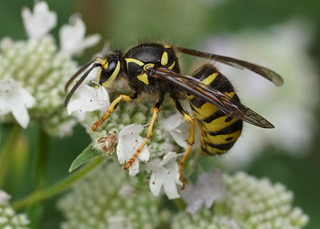


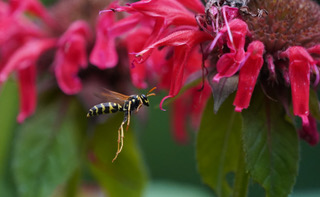


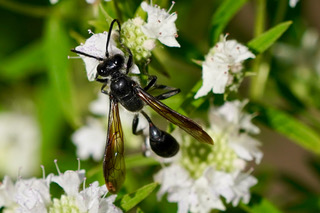
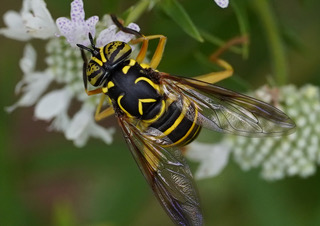
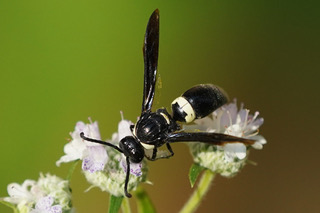

Commentaires